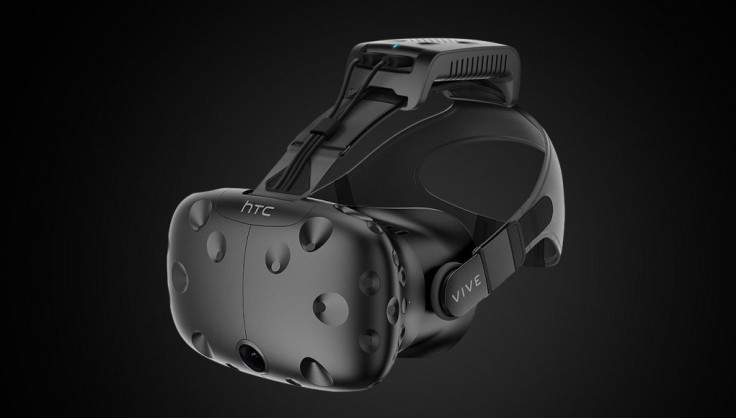Getting hands-on with the wireless HTC Vive, VR gloves and new Tracker sensor
We try out the wireless HTC Vive and new Tracker sensor at the CES technology show in Las Vegas.

The genuinely useful applications for virtual reality extend far beyond gaming and wowing your friends. This became obvious the moment after we pulled open the valve of a fire hose, braced against the kick-back of the water surging out and squatted down to avoid the smoke as we battled a raging kitchen fire.
This being CES, the massive annual technology show in Las Vegas, the fire was virtual and the hose was pulling itself backwards rather than firing water forwards. But the shove it gave, the heating up of our fire-simulating jacket, and the rising panic caused by virtual smoke showcased how varied VR can be.
We are at the Wynn hotel in Las Vegas to look at 10 different examples of how developers and third-party hardware manufacturers are using the HTC Vive VR headset, and to look at the company's newly-announced Tracker.
A beermat-sized sensor, the Tracker can be strapped to your wrist or fitted to a range of accessories; like with HTC's light houses, the Vive headset knows where the Tracker is, making it easy for developers to place an object (or a limb) inside the VR world.
The realism created by the hose, jacket and Tracker made it easy to see why this demo, called Flaim Trainer and developed by the University of Deakin, Australia, could soon become a real training tool.
A second demonstration saw the Tracker fitted to the end of a machine gun, but the bigger news here was the wireless upgrade our Vive had received, from Chinese company TPCast.
The Vive uniquely lets users walk around in what HTC calls 'room scale', but cables sprouting out the top of the headset and running to a nearby computer hamper what is otherwise a wonderful experience. No matter how believable the VR is, half your mind is always on where the cables are. Will I trip up over? Am I tying myself up? Will I catch the cable and yank my £2,000 gaming laptop to the floor? But fear no more, because the only cable here goes to a battery pack slim enough to slide into your back pocket.
Put the headset on, slide the battery into your pocket, pick up the gun and let rip. Running around a virtual world completely untethered is a joyous experience where everything felt better; more real, more believable. It even felt like the image resolution had improved (it hadn't), because our brain could fully immersive itself in the game, not dip a cautious toe in, fearful of being held back by the cable. We didn't notice any lag and the claimed two hours of battery life is likely enough for most users, who will probably want a break from any form of VR after that long anyway.
The wireless kit will go on sale in the second quarter of 2017 and is expected to cost around £200. This isn't cheap, especially considering the Vive already costs £759, so we'll keep our fingers crossed for Vive 2.0 being wireless as standard.

Next up we tried a pair of gloves developed by Manus VR, worn alongside HTC's Tracker on each arm. Combined, the setup meant Vive can transport our shoulders, elbows, wrists and all 10 fingers into virtual reality. The system isn't smart enough to understand when your fingers are intertwined, but otherwise it looks and feels incredibly natural; and an extra point of reference like this should help anyone who suffers from VR-induced motion sickness.
As with cutting the cord for the wireless demonstration, seeing our arms and hands in VR enhances the experience with no real downside. The gloves, which are pricey at $1,000 (£800) a pair, are only being sold to developers to experiment with for now but could well appear with a consumer-friendly design and price tag (plus applications and games to use them with) later in 2017.
These demonstration show us just how diverse the virtual reality market has already become. While gaming is arguably the technology's flagship, it is far from the only useful application for VR.
© Copyright IBTimes 2025. All rights reserved.






















